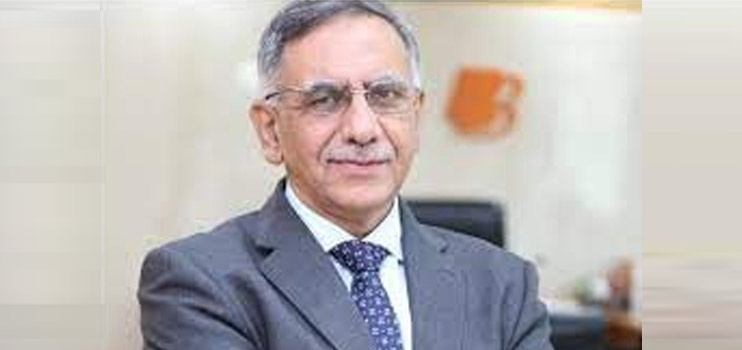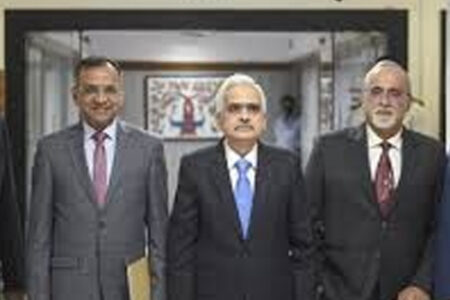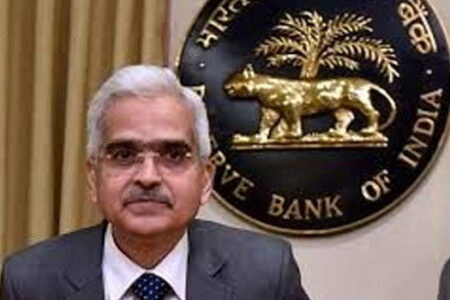The Financial Services Institutions Bureau made recommendations for the successor of Bank of Baroda CEO and Managing Director Sanjiv Chadha and Bank of India chief Atanu Kumar Das on Saturday. Both are set to retire later this month, after a three-year term each.
Within hours of the Bureau’s announcement, the Department of Financial Services, Ministry of Finance, issued a release late evening on Chadha’s extension till June 30, when he turns 60. Das, too, is months away from turning 60.
In the past, at least two chiefs of nationalised banks had retired after completing their term but before touching 60: KR Kamath (he first headed the Allahabad Bank, merged into Indian Bank in 2021, and then Punjab National Bank) and Rajeev Rishi (Central Bank of India).
A finance ministry notification in November 2022 stated that the top-level appointment at nationalised banks could initially be for up to five years and extended by another five years. The prevailing norm was three years or till the age of 60, whichever was earlier.
The immediate provocation for extending the term of whole-time directors could be the presence of too many relatively young executive directors (EDs) in nationalised banks. Quite a few of them are in their early 50s and at least one is in his late 40s. Since the number of such banks has shrunk to 11 after a consolidation drive by the government aimed at stronger and bigger state-owned banks, apart from the State Bank of India (SBI), which is governed by a different Act, there aren’t too many positions at the top.
This means, many of the EDs would have to retire even in their mid-50s. The extension of the tenure will ensure they are around till they are 60 or close to 60.
Last week, one of SBI’s MDs, Challa Sreenivasulu Setty, who was initially appointed for three years, effective January 20, 2020, got another two years. Going by the norm, the whole-time directors’ tenure at SBI is capped at five years, irrespective of the age. I guess the new norm for the top posts at nationalised banks will be extended to SBI, too, through an amendment to the State Bank of India Act.
Unlike the bosses 0f nationalised banks, the SBI chairman can remain at the helm even after hitting 60. Typically, the tenure is for three years. There are exceptions, though. For instance, Arundhati Bhattacharya had got a one-year extension beyond her three-year term and OP Bhatt had got close to a five-year term, one shot.
Extending the tenure of whole-time directors of nationalised banks to 10 years is the first step. They should be allowed to be in the saddle even beyond 60, like SBI. And why not? The tenure of a private bank’s CEO is, after all, capped at 70.
Till the consolidation, barring a few exceptions, the heads of nationalised banks typically did not get to spend more than two years at the helm. The term could even be as short as one year. The top position often remained vacant for months.
For instance, after PS Jayakumar stepped down as Bank of Baroda boss, his successor, Chadha, took over after 100 days. This is when Bank of Baroda was handling the merger of two banks with itself, the first of its kind experiment in Indian banking.
That’s not a long gap if we look at what happened at Andhra Bank (now merged with Union Bank of India). After Suresh Patel’s term ended in December 2017, J Packirisamy walked into the corner office after a gap of 264 days. Similarly, Karnam Sekar got the top job in Dena Bank (merged with Bank of Baroda) and S Harisankar at Punjab & Sind Bank after a gap of 262 days in each case. Thankfully, such instances are history now.
A longer tenure is essential because if the person is not from the same bank, as is often the case, it takes time to get into the groove culturally as every bank is different. Also, size matters. It is not easy for an executive from a small bank to run a large bank.
Besides, most CEOs want to leave the office on a high note. So, often the focus is on balance sheet growth without taking adequate care about managing risks. Typically, a newcomer would tear into the balance sheet inherited, and launch a clean-up drive. This earns the investors’ respect. But as the time to say good-bye approaches, the incumbent follows in the footsteps of the predecessor, since the intention is to leave on a happy note. That was the case until recently. Post the clean-up of balance sheets and consolidation, the cycle seems to have stopped.
Incidentally, no bank chief gets the boot for inefficiency. Of course, bank bosses do get removed for corruption, even though such instances are rare. In the worst-case scenario, the inefficient banker does not get a second term. Ideally, efficient bank chiefs should be given a long tenure, beyond 60, and inefficient ones should be shown the door.
Also, there is no uniformity in the appointment criteria of whole-time directors of the all-India financial institutions such as Small Industries Development Bank of India (Sidbi), National Bank for Agriculture and Rural Development (Nabard), Export-Import Bank of India (Exim Bank), et al. Their tenure is also not uniform.
The advertisement for the Nabard chairman in June 2022 stipulated a minimum three years of below board-level experience (read chief general manager) and the cut-off age was kept at 57. But the advertisement for the position for Sidbi chief in August 2020 had looked for two years of such experience. For the whole-time directors of Exim Bank, the past three advertisements have also looked for a two-year experience.
Also, in order to become Sidbi chief or deputy managing director, the experience required is the same – two years (below board level) – when the responsibilities are vastly different.
Civil servants working with the central and state governments can apply for the post of Sidbi whole-time director, but they are not eligible for the deputy managing directors’ positions at Nabard, which is into financing agriculture. Even though the senior executives at such institutions have expertise in agriculture, exports and financing micro, small and medium enterprise – all of which are part of the so-called priority sector for commercial banks – they cannot apply for the position of ED in a bank. But the senior bankers are eligible for such positions in the all-India financial institutions.
Certain conditions are relaxed only when there are not enough candidates in the fray. In the process, precious time is lost and critical positions remain vacant for long, leaving the organisation directionless.
The qualifying criteria for top posts in all-India financial institutions should be framed to encourage young and deserving candidates. This is the need of the hour. In the past decade, the promotion process in government-owned banks has become faster, making the officers general managers in their early 40s and EDs in early 50s. However, this has not happened in large all-India financial institutions.
We need a comprehensive promotion policy for the entire financial sector, including banks, to attract talent – a commodity that is in woefully short supply now.



